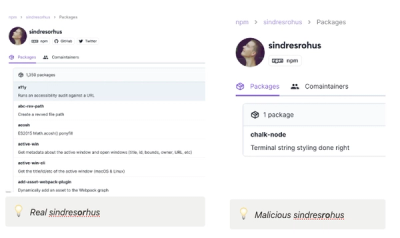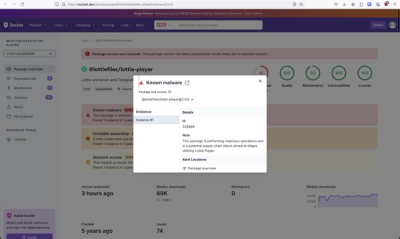What is request?
The 'request' npm package is a simple, yet powerful HTTP client that supports multiple features such as making HTTP calls, handling responses, streaming data, and more. It is designed to be the simplest way possible to make http calls and supports HTTPS and follows redirects by default.
What are request's main functionalities?
Simple HTTP GET requests
This code performs a simple HTTP GET request to Google's homepage and logs the error, response status code, and the response body.
const request = require('request');
request('http://www.google.com', function (error, response, body) {
console.log('error:', error);
console.log('statusCode:', response && response.statusCode);
console.log('body:', body);
});
Streaming data
This code demonstrates how to stream data from an HTTP request directly to a file, which can be useful for downloading files or handling large amounts of data.
const request = require('request');
const fs = require('fs');
const stream = fs.createWriteStream('file.txt');
request('http://www.google.com').pipe(stream);
Custom HTTP headers
This code shows how to send a custom HTTP header (in this case, the User-Agent header) with a request. This is often required when using certain APIs, like GitHub's.
const request = require('request');
const options = {
url: 'https://api.github.com/repos/request/request',
headers: {
'User-Agent': 'request'
}
};
function callback(error, response, body) {
if (!error && response.statusCode == 200) {
const info = JSON.parse(body);
console.log(info);
}
}
request(options, callback);
Handling POST requests
This code snippet demonstrates how to send a POST request with form data, including how to upload a file as part of that form data.
const request = require('request');
const options = {
method: 'POST',
url: 'http://service.com/upload',
headers: {
'Content-Type': 'multipart/form-data'
},
formData: {
key: 'value',
file: fs.createReadStream('file.txt')
}
};
request(options, function (error, response, body) {
if (error) throw new Error(error);
console.log(body);
});
Other packages similar to request
axios
Axios is a promise-based HTTP client for the browser and Node.js. It provides a simple API for making HTTP requests and is often used as an alternative to 'request' due to its promise support and interceptors for request/response manipulation.
got
Got is a human-friendly and powerful HTTP request library. It is designed to be a simpler and more performant alternative to 'request', with features like streams support, promise API, and better error handling.
node-fetch
Node-fetch is a light-weight module that brings the Fetch API to Node.js. It is an alternative to 'request' that provides a simpler, promise-based API for making HTTP requests, similar to what is available in modern web browsers.
superagent
Superagent is a small progressive client-side HTTP request library, and Node.js module with the same API, sporting many high-level HTTP client features. It compares to 'request' by offering a fluent API and being lightweight.
Request -- Simplified HTTP request method
Install
npm install request
Or from source:
git clone git://github.com/mikeal/request.git
cd request
npm link
Super simple to use
Request is designed to be the simplest way possible to make http calls. It support HTTPS and follows redirects by default.
var request = require('request');
request('http://www.google.com', function (error, response, body) {
if (!error && response.statusCode == 200) {
sys.puts(body)
}
})
Streaming
You can stream any response to a file stream.
request('http://google.com/doodle.png').pipe(fs.createWriteStream('doodle.png'))
You can also stream a file to a PUT or POST request. This method will also check the file extension against a mapping of file extensions to content-types, in this case application/json, and use the proper content-type in the PUT request if one is not already provided in the headers.
fs.readStream('file.json').pipe(request.put('http://mysite.com/obj.json'))
Request can also pipe to itself. When doing so the content-type and content-length will be preserved in the PUT headers.
request.get('http://google.com/img.png').pipe(request.put('http://mysite.com/img.png'))
Now let's get fancy.
http.createServer(function (req, resp) {
if (req.url === '/doodle.png') {
if (req.method === 'PUT') {
req.pipe(request.put('http://mysite.com/doodle.png'))
} else if (req.method === 'GET' || req.method === 'HEAD') {
request.get('http://mysite.com/doodle.png').pipe(resp)
}
}
})
You can also pipe() from a http.ServerRequest instance and to a http.ServerResponse instance. The HTTP method and headers will be sent as well as the entity-body data. Which means that, if you don't really care about security, you can do:
http.createServer(function (req, resp) {
if (req.url === '/doodle.png') {
var x = request('http://mysite.com/doodle.png')
req.pipe(x)
x.pipe(resp)
}
})
And since pipe() returns the destination stream in node 0.5.x you can do one line proxying :)
req.pipe(request('http://mysite.com/doodle.png')).pipe(resp)
Also, none of this new functionality conflicts with requests previous features, it just expands them.
var r = request.defaults({'proxy':'http://localproxy.com'})
http.createServer(function (req, resp) {
if (req.url === '/doodle.png') {
r.get('http://google.com/doodle.png').pipe(resp)
}
})
You can still use intermediate proxies, the requests will still follow HTTP forwards, etc.
request(options, callback)
The first argument can be either a url or an options object. The only required option is uri, all others are optional.
uri || url - fully qualified uri or a parsed url object from url.parse()method - http method, defaults to GETheaders - http headers, defaults to {}body - entity body for POST and PUT requests. Must be buffer or string.json - sets body but to JSON representation of value and adds Content-type: application/json header.multipart - (experimental) array of objects which contains their own headers and body attribute. Sends multipart/related request. See example below.followRedirect - follow HTTP 3xx responses as redirects. defaults to true.maxRedirects - the maximum number of redirects to follow, defaults to 10.onResponse - If true the callback will be fired on the "response" event instead of "end". If a function it will be called on "response" and not effect the regular semantics of the main callback on "end".encoding - Encoding to be used on response.setEncoding when buffering the response data.pool - A hash object containing the agents for these requests. If omitted this request will use the global pool which is set to node's default maxSockets.pool.maxSockets - Integer containing the maximum amount of sockets in the pool.timeout - Integer containing the number of milliseconds to wait for a request to respond before aborting the requestproxy - An HTTP proxy to be used. Support proxy Auth with Basic Auth the same way it's supported with the url parameter by embedding the auth info in the uri.
The callback argument gets 3 arguments. The first is an error when applicable (usually from the http.Client option not the http.ClientRequest object). The second in an http.ClientResponse object. The third is the response body buffer.
Convenience methods
There are also shorthand methods for different HTTP METHODs and some other conveniences.
request.defaults(options)
This method returns a wrapper around the normal request API that defaults to whatever options you pass in to it.
request.put
Same as request() but defaults to method: "PUT".
request.put(url)
request.post
Same as request() but defaults to method: "POST".
request.post(url)
request.head
Same as request() but defaults to method: "HEAD".
request.head(url)
request.del
Same as request() but defaults to method: "DELETE".
request.del(url)
request.get
Alias to normal request method for uniformity.
request.get(url)
Examples:
var request = require('request')
, rand = Math.floor(Math.random()*100000000).toString()
;
request(
{ method: 'PUT'
, uri: 'http://mikeal.couchone.com/testjs/' + rand
, multipart:
[ { 'content-type': 'application/json'
, body: JSON.stringify({foo: 'bar', _attachments: {'message.txt': {follows: true, length: 18, 'content_type': 'text/plain' }}})
}
, { body: 'I am an attachment' }
]
}
, function (error, response, body) {
if(response.statusCode == 201){
console.log('document saved as: http://mikeal.couchone.com/testjs/'+ rand)
} else {
console.log('error: '+ response.statusCode)
console.log(body)
}
}
)



